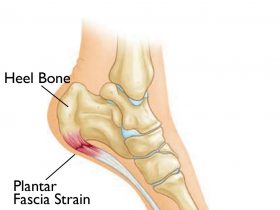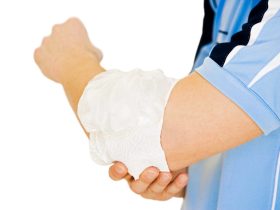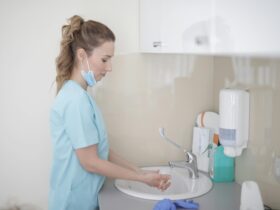Spending time in a hospital, nursing home or any type of healthcare facility puts patients at risk for healthcare-acquired infections, or HAIs. Also known as nosocomial infections and hospital-associated infections, HAIs are a major cause of global morbidity and mortality. They are defined as an infection — a disease caused by micro-organisms — that patients acquire when receiving care in a healthcare facility.
In the Unites States, the rates of HAIs are closely monitored by the Centers for Disease Control and Prevention (CDC). In 2021, the CDC estimated 687,000 HAIs were reported in acute care hospitals. Furthermore, roughly 72,000 hospital patients with HAIs died during their hospitalization that year.
There are many types of HAIs. The most frequently reported include catheter-associated urinary tract infections, ventilator-associated pneumonia and central line-associated bloodstream infections. The most common cause of HAIs is the introduction of certain bacterial strains, including C. difficile, MRSA, Enterococcus and various Pseudomonas species.
Transmission of these bacteria comes through many sources. A major cause is using contaminated medical devices during diagnostic and therapeutic procedures. Other modes of transmission include improperly cleaned or maintained ice machines, table trays and assorted hospital equipment as well as contaminated high-touch surfaces throughout the facility. Patients are exposed to the germs on these surfaces through both direct and indirect contact when proper sanitation procedures are not followed.
While not every mode of transmission is preventable, such as airborne spread, there are ways to reduce the excessively high rate of infection. By adhering to industry best practices, organizations, staff members and patients can take steps to minimize the transmission of infections and diseases. For instance, patients should follow strict hand hygiene practices during their hospital stay, complete any course of antibiotics they are prescribed and monitor IV sites for redness, swelling or leakage.
Hospital staff members should also follow strict hand hygiene practices as well to reduce the spread of contagions. Other best practices include wearing personal protective equipment correctly, abiding by isolation protocols, observing safe injection practices, using antibiotics wisely and being mindful of those patients who are at an elevated risk.
At an organizational level, addressing HAIs often entails adhering to the latest reprocessing guidelines and equipment manufacturer’s recommendations. These help ensure medical devices, surgical equipment and other care essentials comply with standard sterilization techniques. Other measures include stringent cleaning policies for equipment throughout the facility that are lesser-known reservoirs for pathogens — such as ice machines, sink drains and frequently touched textile surfaces.
Want to learn more about HAIs and the importance of proper cleaning practices in healthcare facilities? Check out the accompanying resource for further information.
Infographic created by Empire Cooler, Supplying Commercial Ice Maker Lease To Address Your Business’s Ice and Refrigeration Needs
https://infectionpreventionandyou.org/wp-content/uploads/2016/09/Break-the-Chain-of-Infection.pdf










